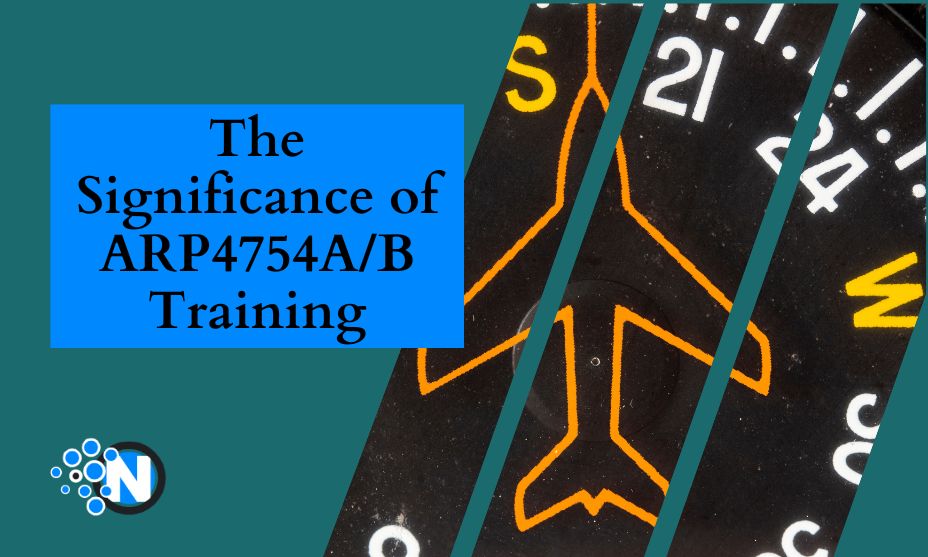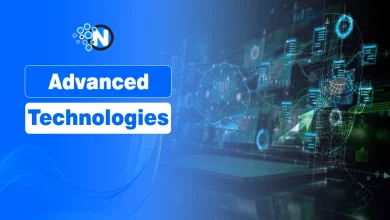Elevate Your Avionics Expertise – The Significance of ARP4754A/B Training

In this modern landscape of aviation technology, staying ahead of the curve is imperative for professionals in the avionics field. As aviation systems become more sophisticated and complex, adhering to industry standards and best practices is crucial to ensure safety, reliability, and compliance. This is where ARP4754A/B training steps in.
This article delves into why ARP4754A/B training is of paramount importance for avionics professionals, as it equips them with the knowledge and skills needed to navigate the intricate world of aviation systems development.
Why ARP4754A?
Before delving into ARP4754A specifics, one should truly consider why it exists. When avionics systems were simpler decades ago, it was possible for smart designers to mentally conceive those systems and proceed immediately with implementation. Admittedly today, the need for ARP4754A is less justifiable for simple systems. At the same time, the number, variety, and complexity of systems continue to grow exponentially. Clearly, avionics systems can be much more complex than commercial brick-and-mortar buildings, but it would be inconceivable to begin building a commercial office building without a soil/earthquake analysis, foundation design, and a plan for inspections.
Those inspections obviously continue throughout the building process including satisfactory electrical, plumbing, emergency exits, and proper reinforcement. While it is possible great builders could possibly build a safe building without detailed plans, blueprints, processes, and inspections, there would be no way to fully verify the building’s “greatness.” Why? “Greatness” must be associated with proof a building is great. Proof is based upon assessing implementation versus plans then correcting any deficiencies found.
ARP4754B versus ARP4755A
Key updates in the new ARP4754B over ARP4754A include:
• Better alignment of ARP4754B to the forthcoming ARP4761A (itself an update over ARP4761)
• Changes to Development Assurance Level (DAL) assignment
• Model-based systems engineering
• Applying ARP4754B’s greatly enhanced “Modifications and Reuse” for aircraft and avionics
systems
• Better examples for applying ARP4754B
ARP4754 was “good”: it described a foundational process for developing safe, good-quality avionics systems and aircraft. However, due to the evolution of related guidelines and certification refinement, and a requirement to address increasing integration and complexity of systems, ARP4754 was considered by many to be incomplete; thus it was not applied as rigorously as needed. The “iterative approach” within ARP4754 was expanded in ARP4754A (in conjunction with ARP4761/A) to ensure that developers apply a formal iteration process to safety whereby safety is continually addressed with refined safety assessments throughout the project.
ARP4754’s Planning Process
What do aircraft, complex systems, and simple systems alike have in common? They come under the purview of ARP4754A. It is almost impossible for one guideline to be all things to all people; ARP4754A strives to come close. Since aircraft and systems can have huge variations, ARP4754A avoids mandating a prescriptive approach. Instead, guidance is provided for the developer to consider the ramifications of safety and functionality external and internal to their scope of development and proceed accordingly. The analogy is that of a personal fitness coach whose goals vary dramatically depending upon their coaching an injured patient, an average office-worker, or an Olympic athlete: different problem domains require a different focus. But there is only one ARP4754A so the guidelines must be generic enough to satisfy different domains. Central to any aircraft/system development process is ARP4754A’s required Planning process.

Significance of ARP4754A/B Training
1. Ensuring Compliance and Regulatory Adherence
ARP4754A/B, also known as “Guidelines for Development of Civil Aircraft and Systems,” is a standard issued by the Federal Aviation Administration (FAA) and the European Aviation Safety Agency (EASA). It provides a systematic approach to the development of aircraft and aviation systems, emphasizing safety, reliability, and compliance with regulatory requirements. Avionics professionals who undergo ARP4754A/B training gain a deep understanding of these regulations, ensuring that their work aligns with the industry’s stringent safety and quality standards.
2. Mitigating Risks and Enhancing Safety
In the aviation industry, safety is paramount. Avionics systems play a critical role in the overall safety and operation of an aircraft. ARP4754A/B training equips professionals with the tools to identify potential risks and hazards during the development and integration of avionics systems. By adhering to the guidelines outlined in ARP4754A/B, avionics experts can implement robust safety measures, thereby reducing the likelihood of system failures, malfunctions, or accidents.
3. Streamlining Development Processes
Complex avionics systems involve multiple components and intricate interconnections. ARP4754A/B provides a structured and systematic approach to the development process, from concept to certification. Avionics professionals who undergo training in ARP4754A/B gain insights into efficient development methodologies, requirements analysis, and system integration. This knowledge streamlines the development process, minimizing delays and ensuring a more seamless integration of avionics systems.
4. Enhancing Collaboration and Communication
The aviation industry is characterized by multidisciplinary collaboration among engineers, designers, regulators, and manufacturers. ARP4754A/B training fosters a common language and understanding among these stakeholders. Avionics professionals who are well-versed in ARP4754A/B can effectively communicate requirements, specifications, and design considerations to their peers and collaborators, leading to smoother interactions and a more cohesive development process.
5. Achieving Cost-Effectiveness and Efficiency
Developing avionics systems involves significant investments of time, resources, and finances. Implementing the principles of ARP4754A/B training can result in cost savings over the long term. By identifying potential issues early in the development process and ensuring a thorough verification and validation process, avionics professionals can prevent costly rework, modifications, and delays, thereby enhancing overall project efficiency.
6. Navigating Technological Advancements
The aviation industry is rapidly evolving, with new technologies and innovations shaping the future of flight. Avionics professionals who undergo ARP4754A/B training are better equipped to adapt to these changes and incorporate new technologies into their systems. This training ensures that avionics experts remain at the forefront of industry developments, enabling them to design and integrate cutting-edge avionics solutions.
7. Elevating Professional Credibility
Professionals who complete ARP4754A/B training demonstrate a commitment to excellence and a deep understanding of aviation standards and practices. This level of expertise enhances their professional credibility within the industry. Avionics experts who have undergone ARP4754A/B training are more likely to be sought after by employers, clients, and collaborators who value a strong foundation in aviation systems development.
Conclusion
In the dynamic and safety-centric world of aviation, ARP4754A/B training is a cornerstone for avionics professionals. This specialized training equips individuals with the knowledge and skills needed to develop, integrate, and maintain avionics systems that adhere to rigorous safety standards and regulatory requirements. By undergoing ARP4754A/B training, avionics experts not only elevate their own expertise but also contribute to the broader goal of advancing aviation safety, efficiency, and innovation. As aviation technology continues to advance, embracing ARP4754A/B training is an investment that ensures a rewarding and impactful career in the dynamic field of avionics.




